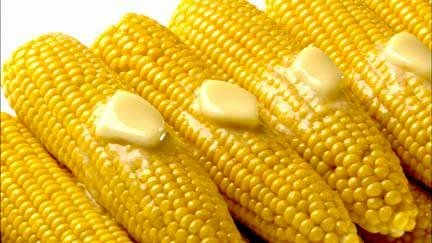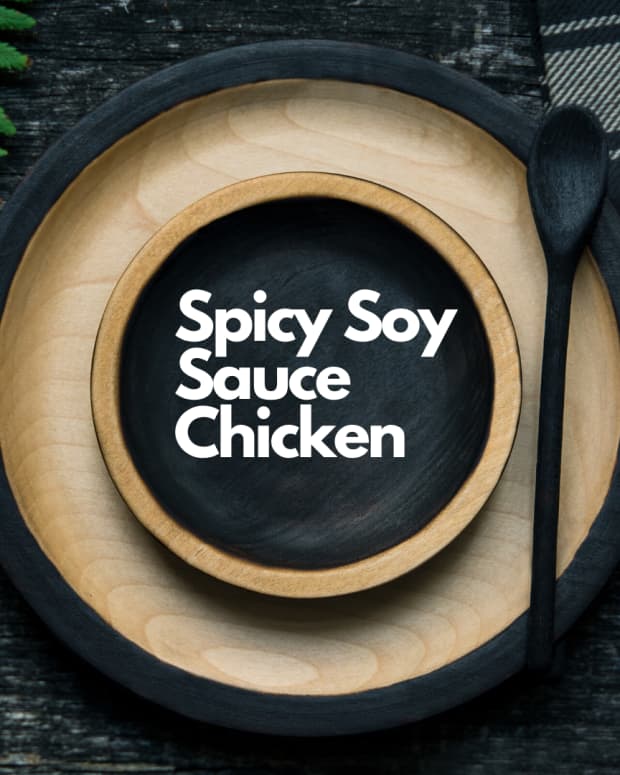How to Cook Corn on the Cob: a Comprehensive Guide
Robert is a self taught kitchen cook. Follow his journey from a fast food junk food diet to a eat fresh masterful cook. Eat well, Live Well
Learning How to Cook Corn on the Cob
Corn on the cob is a family favorite in many households. At first, the methods of cooking corn on the cob seem essentially the same: 1) prepare the corn 2) cook the corn and 3) serve the corn. However, you can choose between boiling, steaming, microwaving, grilling, and baking. All the methods will follow the standard steps.
5 Corn Cooking Methods
1. Boiling
Your first step in learning how to cook corn on the cob is to master the simplest, most common method. In terms of cooking skill and experience, boiling corn on the cob is virtually foolproof.
- Start a pot of boiling water. (Some recipes call for adding salt, oil, or sugar to the boiling water.)
- Remove the husks and silk from the corn.
- Wash the corn to remove any loose silk strands and substances. (Some recipes call for soaking the corn cobs in water for 15 to 30 minutes.)
- Once the water boils, put the corn cobs in the water for 5 to 7 minutes. Cover the pot.
- Remove pot from heat and let cool for about 10 minutes.
- Remove corn cobs from the pot with tongs. (Caution: Very hot!)
- Serve with butter and salt. (Some people trim each end of the corn cob for ease with eating and for presentation value.)
2. Steaming
Many people learn the benefits of steaming vegetables. Usually, steaming vegetables does not burn away as many of the nutrients and natural vitamins. Unfortunately, fresh corn does not follow the same convention. Steaming corn on the cob removes the same amount of nutrients as all other methods (but you do not have to tell your health-conscious guests that piece of information).
The steps are virtually the same as above with the main difference being that you place the corn cobs on a steaming rack above the boiling water. The downside is that you can only steam a limited number of corn cobs at a time, depending on the dimensions of your steamer pot. Most people do not own a large steamer pot so I would discourage using this method.
3. Microwaving
Cooks have a natural disgust for using the microwave, but it is a great timesaver. Cooks tend to be purists and look upon the microwave as an inappropriate cooking device. However, using the microwave to learn how to cook corn on the cob is an excellent way to give your guests their old family favorite without much effort. Unfortunately, the microwave method is geared to cooking only one or two ears of corn at a time.
- Leave husks on the corn. Soak corn cobs in water for 30 minutes.
- Remove the corn cob from the water and allow excess water to drain from the cobs.
- Place the corn cobs on a microwave plate.
- Cook for 4 minutes. Turn plate and rotate corn cobs.
- Cook for 3 more minutes. Remove plate. (Caution: Very hot)
- Let cool for 8–10 minutes and remove the husks and corn silk. (Rinse under cool water to remove any further corn silk.)
- Serve with butter and salt.
4. Baking
Of all the methods, this one appears to be the least used but is perhaps the simplest to master. The biggest debate with this method is whether to leave the husks on, or remove the husks and wrap the corn cobs in aluminum foil. Baking your corn on the cob, especially with the foil option, opens some interesting possibilities for adding seasonings to the cooking process. Imagine adding a little paprika or some minced garlic inside the foil wrap. I have experimented with several combinations and developed a few favorites, including Sweet Relish Corn on the Cob.
- Preheat the oven to 375 degrees F.
- Wash the husks or remove the husks and wrap corn cobs in aluminum foil.
- Place corn on the middle rack.
- Cook for 30 minutes.
- Remove the corn from the oven and remove the husks or aluminum foil. (Careful the corn cobs will be very hot.)
- Serve with butter and salt.
5. Cooking on the Grill
Cooking corn on the grill requires the most prep work, the most cooking attention, and has the greatest risk of failure. However, it is my absolute favorite way to cook corn on the cob. My guests love watching the grill cover being lifted and seeing the steaks, the chicken, and the neatly positioned row of corn roasting on the grill. For me, it is all about presentation. My guests see the corn being roasted and somehow they believe it tastes better. I use three standard methods: 1) in the husk, 2) with the husk and 3) no husk.
In the Husk
- Soak the corn in water for 1 hour.
- Place corn cobs on medium-high heat.
- Rotate 90 degrees every 5 minutes.
- Remove from grill and let cool for 3 minutes.
- Let your guests remove the husks (this is half the fun). Note: Provide a separate garbage can for husks.
With the Husk
- Peel back the husks but do not remove the husks.
- Wash off the corn silk.
- Coat the corn with mayonnaise. (Sounds weird but trust me on this one.)
- Tie off the husks with some butcher string.
- Place the exposed corn directly on the grill. (Allow the husks to hang outside the grill.)
- Close the grill lid—it looks awesome.
- Turn the corn often. You will have some burned kernels.
- Serve directly from the grill.
No Husk
- Remove husks.
- Wash corn and remove the corn silk.
- Place a piece of aluminum foil on part of the grill. Low heat.
- Place corn on the aluminum foil.
- Cook for 30 to 40 minutes, rotating every 5 minutes.
- Serve directly from the grill.
Does Fresh Corn Have Any Nutritional Value?
To best learn how to cook corn on the cob, we should discuss why we might choose corn on the cob. If you do research, you will discover that corn is very low in nutritional value compared to other vegetables. Many nutritionists even point out that corn is a natural inflammatory that can cause dietary issues. All nutritionists agree that fresh corn is high in fiber, but very few will agree on its health benefits. Additionally, if there is nutritional content, you will lose most of the vitamins when you cook it. So why corn on the cob? I have one simple answer: It tastes good!
Conclusion
While corn on the cob may not be a nutritional powerhouse, it is a traditional favorite. Therefore, learning how to cook it should be a part of your cooking experience. Adding corn on the cob as a side dish is a nice touch, telling your guests that you care about the food you are serving. Besides, corn on the cob just tastes good.
Health Tip: If you want to keep your corn on the cob healthy, replace the “butter and salt” toppings with lime juice and fresh pepper.
© 2012 Robert Loescher
















